How to Store Ammo
January 5th, 2024
7 minute read
Ammunition is not cheap, so its proper storage is an important consideration for many people. Keeling your cartridges in good working condition relies a lot on how you store your ammunition. In this article, Dr. Will Dabbs offers a unique look at how to store ammo safely. His perspective as a firearms enthusiast, veteran and doctor at an ammunition plant all come together for a succinct look at the topic.
Not just everybody knows this, but there are actually two broad categories of American money in circulation. Regular money goes toward rent, gas, food and diapers. By contrast, gun money buys firearms, ammunition and accessories. These two types of money might look the same, but they are very, very different.
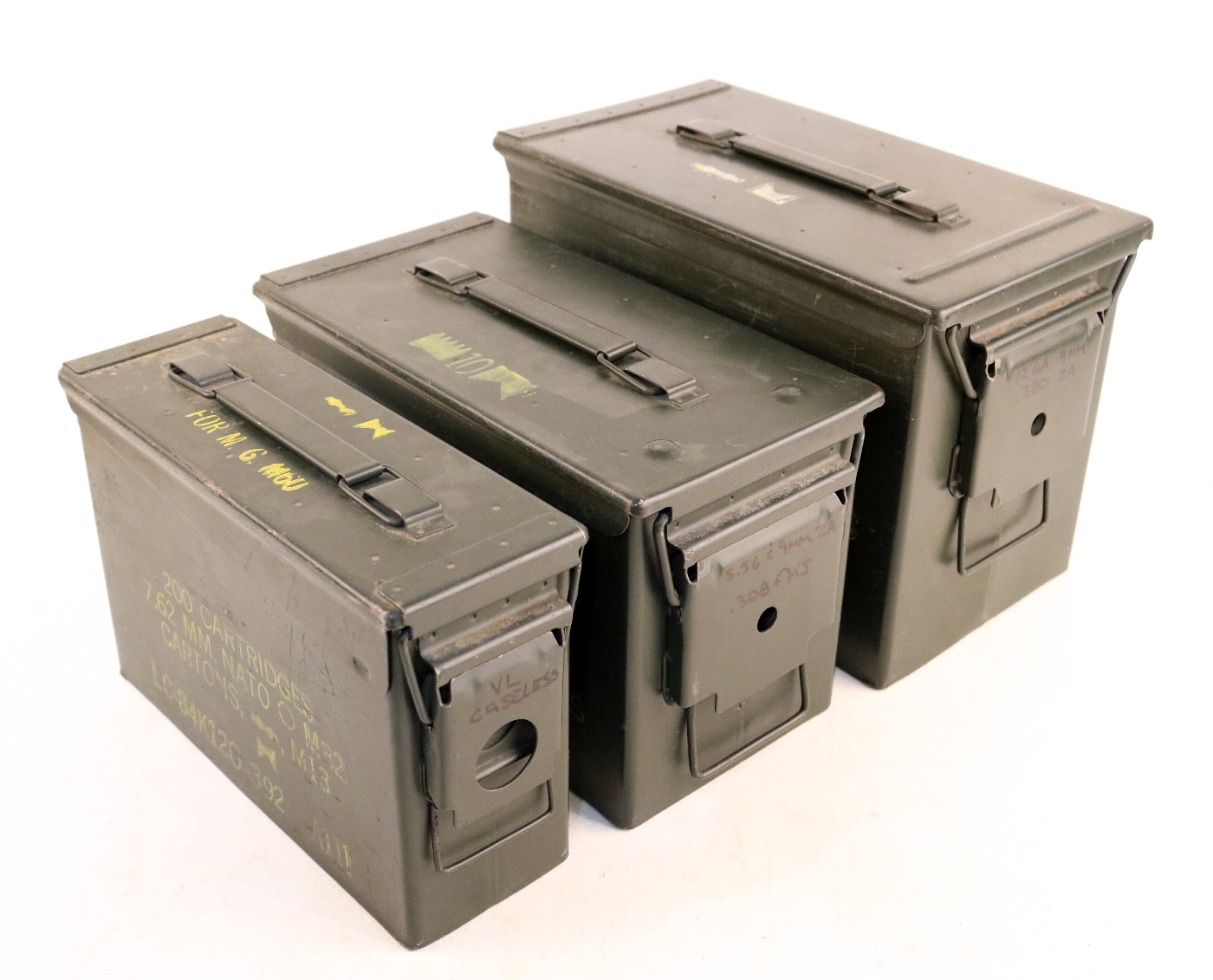
Similarly, there are also two fundamentally different kinds of ammunition on the market today. Blasting bullets are cheap bulk-packed, no-frills jacketed ball that you use for both recreation and training. Blasting bullets are frequently steel-cased and are built to be burned.
By contrast, defensive bullets are the good stuff. This is high-end, high-performance ammo that you stash away for use in your defensive firearms. Considering ammo of any sort is really expensive, it behooves us to invest a little forethought into how we maintain it. If you want your ammo stash to last, you need to store it properly.
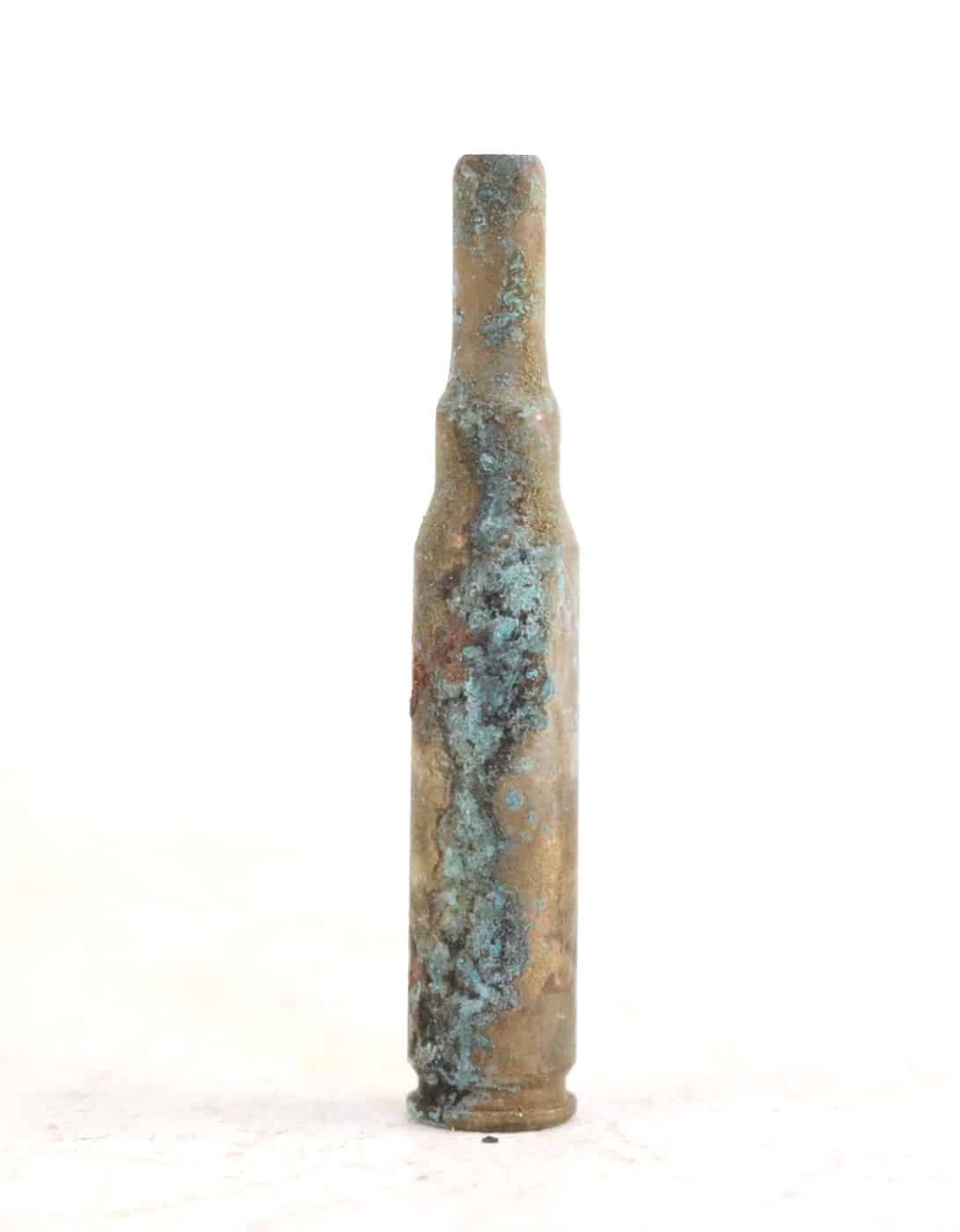
I always find it entertaining when news people breathlessly report that some miscreant was discovered to have a “stockpile of ammunition” upon his apprehension. A single brick of .22 shells is 500 rounds. Maintain enough ammo to properly feed a decent defensive handgun, a modern sporting rifle, a rimfire plinking gun, and a defensive shotgun and you will have your own ammo stockpile by any reasonable metric. Just embrace it.
Shelf Life: Chemistry is a Cruel Mistress
We live in a fallen world. The evidence of that is all around us. Leave most anything exposed to the humidity and elements and it will eventually corrode, rot or die. The technical term is entropy. This is the quantifiable state of disorder in any natural system. Everything about life from birth to the grave is actually one big exercise in pushing back against entropy. When it comes to ammunition, your primary enemies are heat and oxidation.
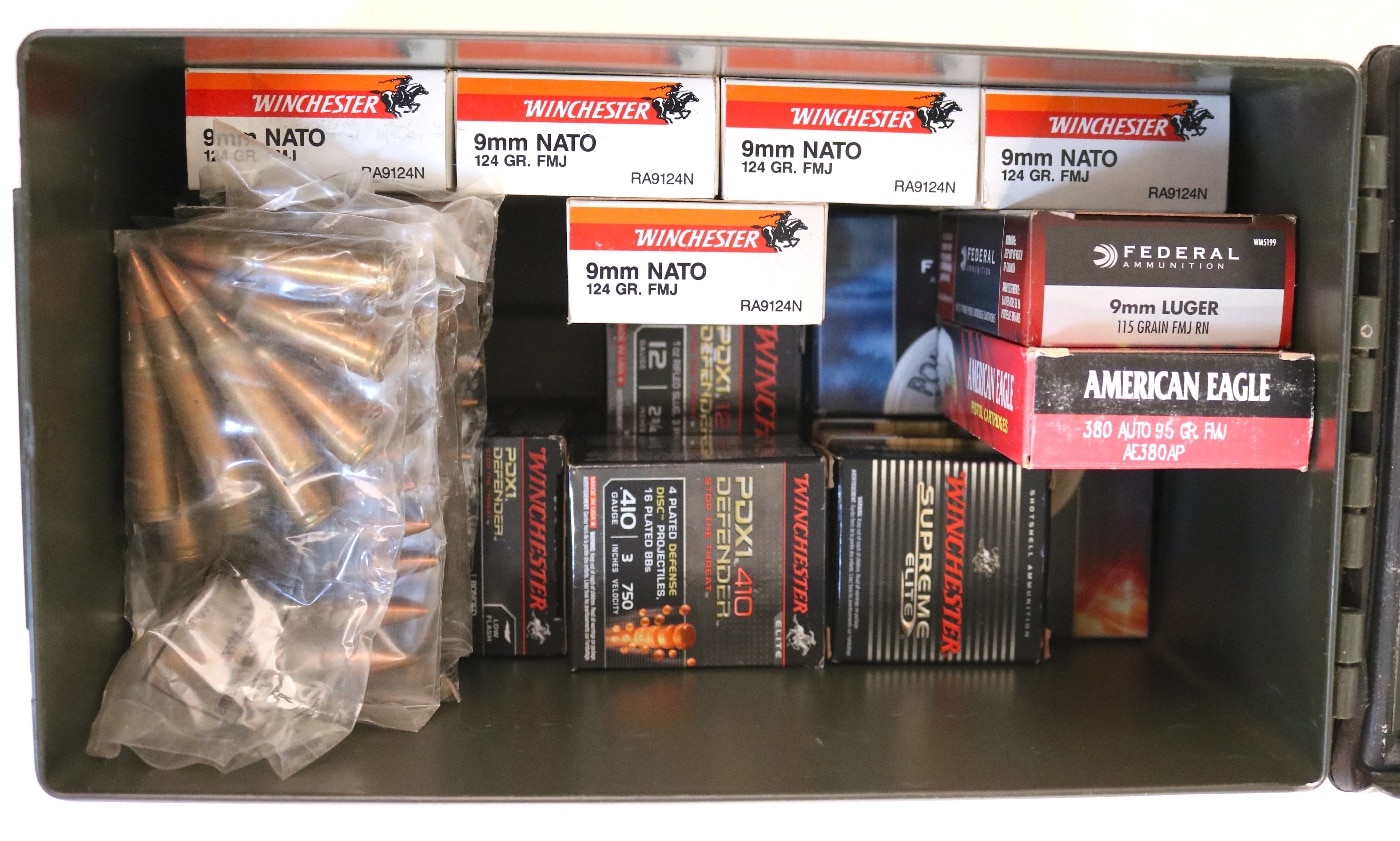
I am the plant doctor for a sprawling ammunition plant in my little Southern town. They produce vast quantities of military ammo. I was amazed when first I started working there at the effort that went into designing ammunition for U.S. troops that would operate reliably through a wide range of temperatures and environmental conditions.
However, ammo is innately consumable. It is designed to be stored in a protected environment and then remain weather-resistant for a relatively brief period of time after issue. That makes baseline storage conditions very important.
Ammunition and Extreme Heat
Modern ammunition is quite heat-stable. 150 degrees F is a good safe upper limit for planning purposes. In all of recorded history, it has never gotten that hot on planet earth due to natural forces alone. However, your attic or the trunk of your car can indeed become fairly hellish, particularly in the summer down in the Deep South where I live.
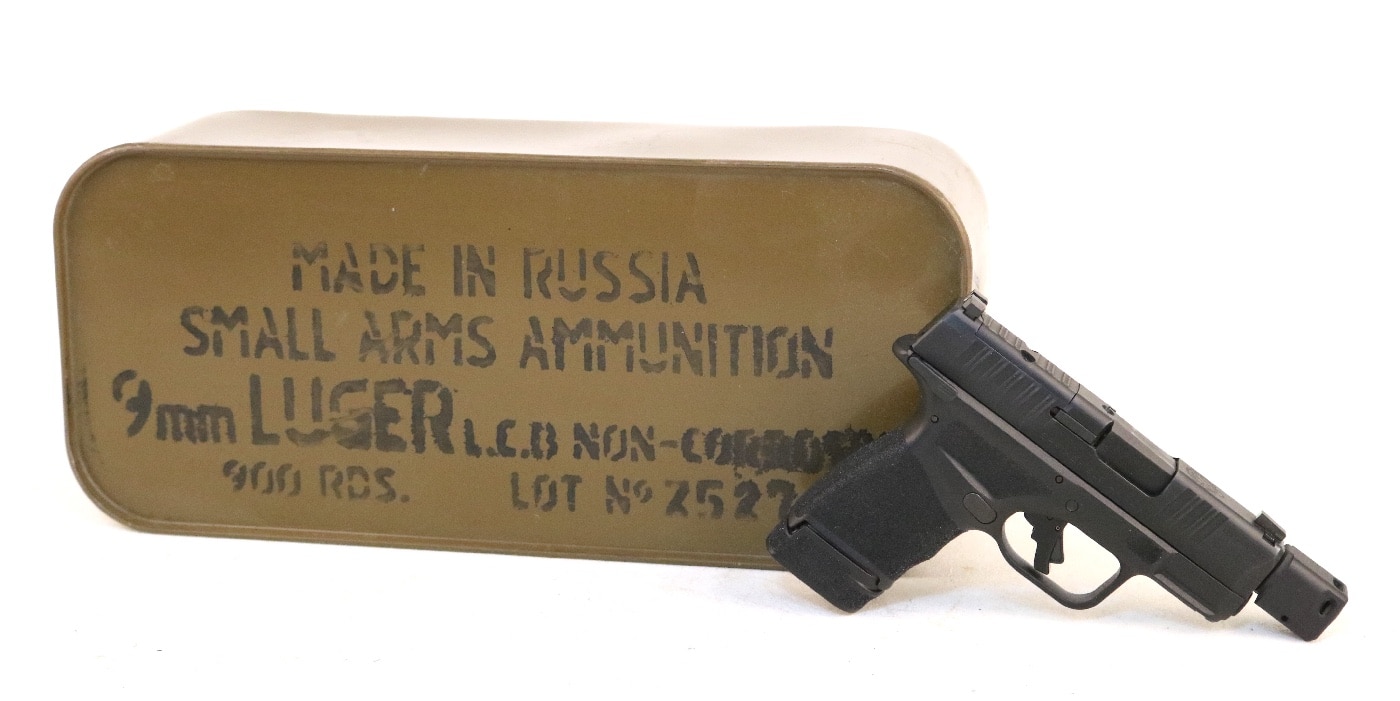
Long term exposure to elevated temperatures can cause your ammunition to degrade. Don’t leave your ammo in such toasty places for long periods unnecessarily. Cool dry areas like a closet, underneath a cabinet, or inside the gun safe are better.
Moisture and Corrosion
Most metals react with oxygen to form oxides. Oxides can diminish structural strength and just make things nasty. Good old-fashioned rust is the most obvious example. This process requires both oxygen and an electrolyte. Oxygen is obviously a ubiquitous component of air. Water vapor condensing on the substrate is the most common electrolyte.

The goal is simply to store your ammo away from moisture. That requires some kind of physical barrier plus initial desiccation, which is the removal of water.
A dehumidifier will work well in a safe where you expect to rotate through the ammo with some regularity. If you are going to store ammo long-term, you will want to put it in something that is sealed against the elements and make sure it is dry from the outset.
Tools to Store Your Ammo
I do love me some G.I. ammo cans. Those things are just awesome. They are rugged, inexpensive, versatile, and purpose-designed to store ammunition safely. They stack readily, and they look cool. All those pointy square corners combined with that minimalist retractable pressed steel handle make them ghastly to hump long distances, but normal people don’t have to do that very often. They come in a wide variety of shapes and sizes.
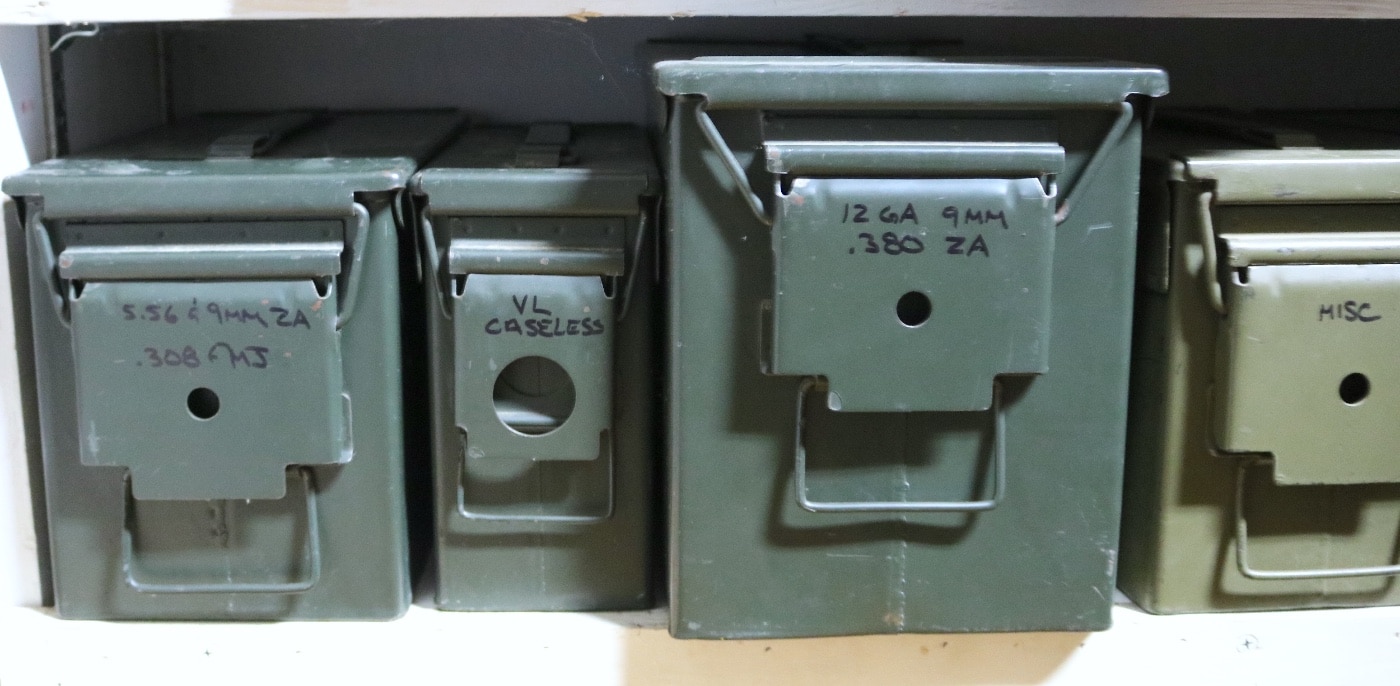
The 20mm, 30mm, and 40mm cans are all big, bulky, and voluminous. Cans used to transport 81mm mortars are frankly enormous. They are all made from pressed steel painted OD green and sport the same heavy steel latch and pivoting lid. The lids all have rubber gaskets that keep moisture at bay and are readily removable. If you have big stuff you need to store these are all good options, but they are bulky. Additionally, fill one of those boxes all the way up with small arms ammo and it will be too heavy to carry. The most common and practical ammo cans are the .30 and .50-caliber sort.
The military designation for the smaller .30-caliber can is M19A1. The larger .50-caliber variety is the M2A1. Uncle Sam issues combat-packed 5.56mm on stripper clips in the M2A1 .50-caliber can as well.
The PA108 is a bit larger than the M2A1 and is designed to carry linked 5.56mm SAW ammo. These are commonly called “Fat Fifties” as they are slightly larger than the .50-caliber cans. They all have their merits for civilians wishing to store their ammo safely.
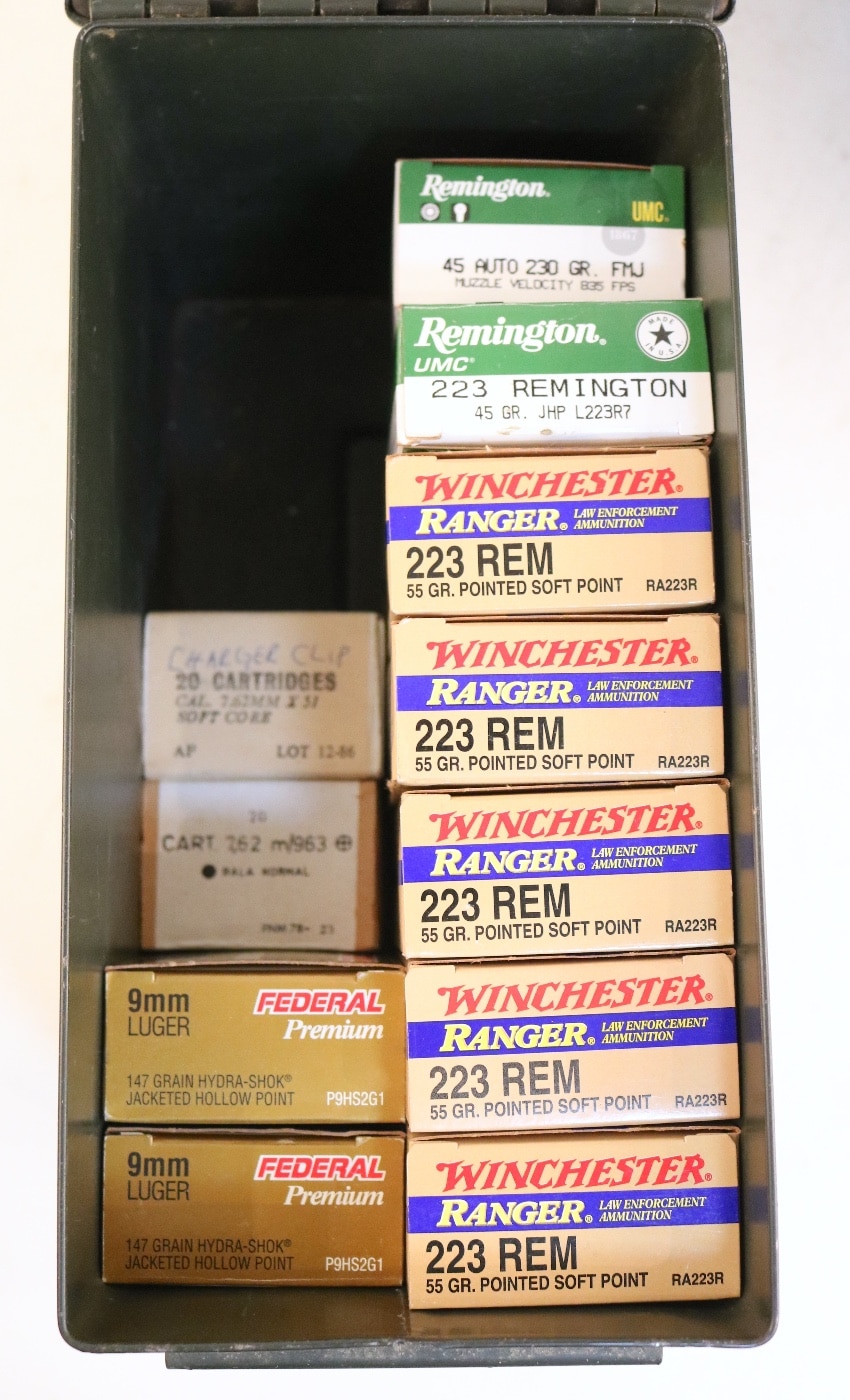
Actual G.I. surplus ammo cans look cool because they have all that nifty stenciling on the outside. However, you can get essentially the same cans brand new from a variety of civilian sources. As of this writing, Amazon will sell you a fine M2A1 knockoff for twenty bucks. The .30-caliber version is $17. For another couple of dollars each they offer the same cans with lockable hasps. My local Walmart and Harbor Freight Tools offer them as well at comparable prices. Plastic versions are cheaper but not quite as durable.
Efficiently organizing and packing your ammo in the cans is half the fun. Before you seal them up, give the interior a quick going over with a blow dryer to make sure all the residual moisture is burned away.
Managing Moisture in Your Ammo Storage
If you plan on seriously long-term storage or if you live in a really humid place, you might want to pack a little desiccant in with your stash. These are the annoying little pouches that come stuffed into medicine bottles sporting the handy admonition, “Do Not Eat.”
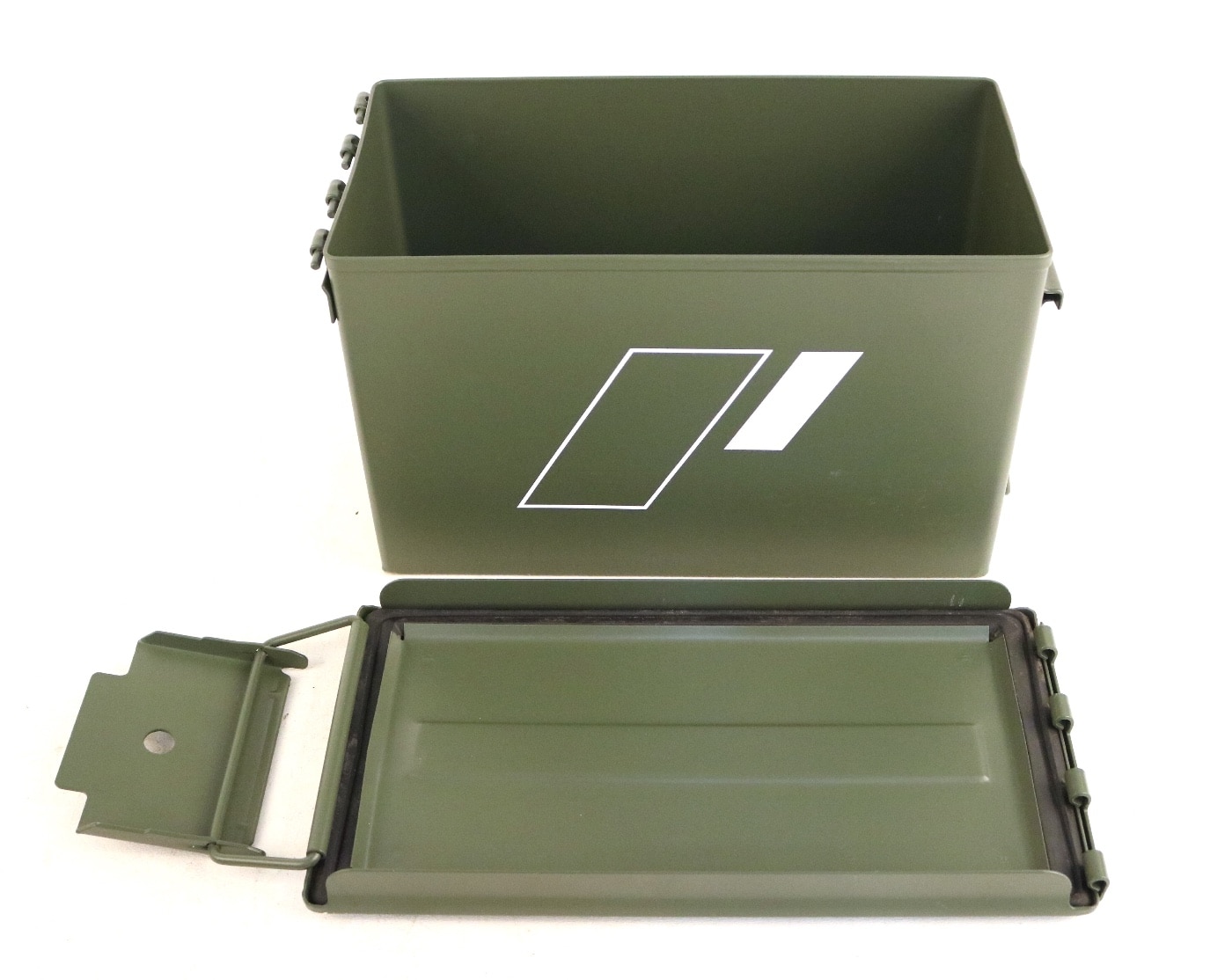
They include chemicals that naturally absorb moisture and keep the surrounding material dry. These little silica gel packs can be had in the neighborhood of 50 for about $10. In a sealed container, they work great for pulling moisture out of the air to keep ammo dry.
Some chemical desiccants can be rejuvenated, most commonly via a brief stint in the oven. Others are actually electrically powered rechargeable modules that are energized via wall power. If you’re really cheap you can make your own out of kitty litter and socks or even baking soda. The details are available online.
Final Thoughts on How to Store Ammo
There are lots of other ways to store ammunition, but none are so efficient, effective, inexpensive, and cool as are plain old G.I. ammo cans in my opinion. Pack a thousand rounds of 5.56mm away sealed in a steel ammo can with a little desiccant in a cool dry place and that stuff will still run reliably for your great grandchildren.
Just like groceries, rotate your stock so you shoot the old stuff first and your “ammo stockpile” will outlive you.
Editor’s Note: Be sure to check out The Armory Life Forum, where you can comment about our daily articles, as well as just talk guns and gear. Click the “Go To Forum Thread” link below to jump in!
Join the Discussion
Continue Reading
Did you enjoy this article?

 543
543






